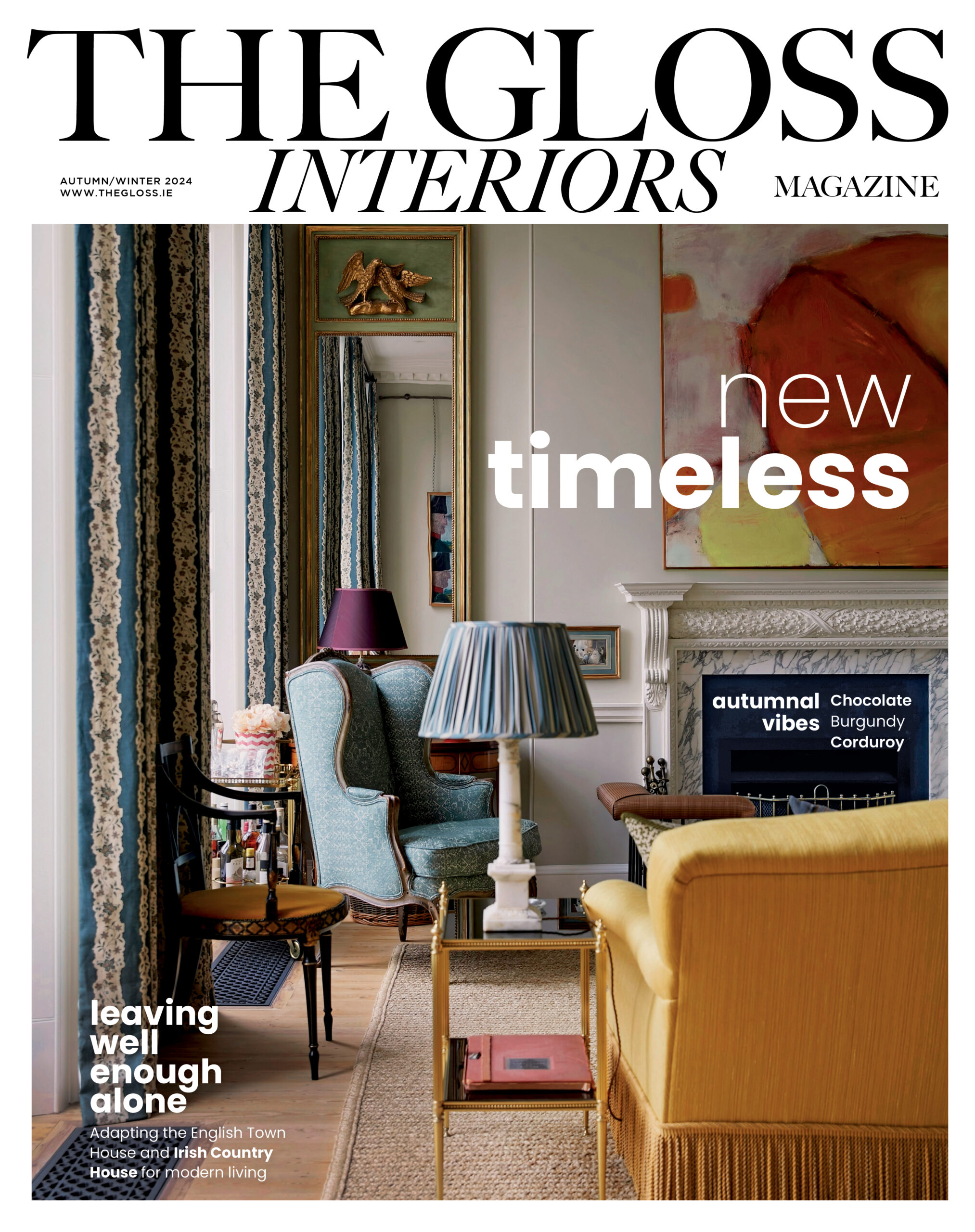While agritourism is set to be the next big travel trend, more people are upping sticks and moving to the country permanently. One couple describe how they have adapted to country living…
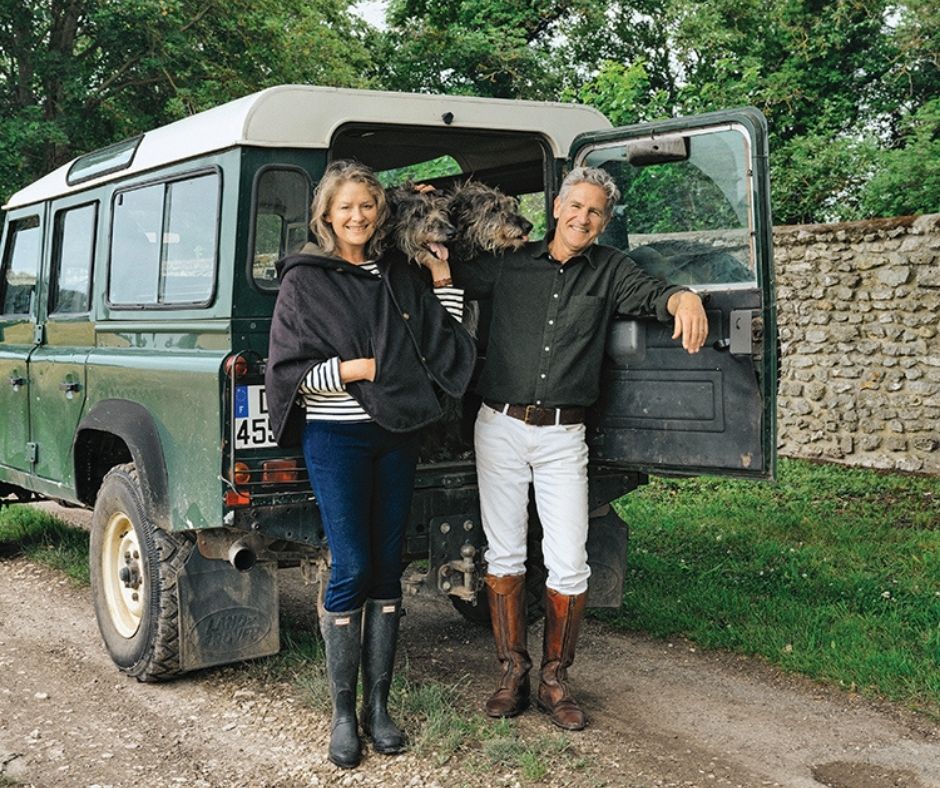
Isabelle Townsend and Patrick Deedes’ house in rural France sits enthroned on a little knoll amid fields. This old farmstead, composed of several buildings in the middle of nowhere and standing out in the distance, is the stuff of dreams. It is exactly the kind of place that Isabelle and Patrick had always hoped to find. Patrick worked for a long time as an agent and producer in the fashion photography business, collaborating with personalities such as Peter Lindbergh. “I spent my time travelling between Paris and New York, and we also had a London office. It was London, Paris, New York, all the time; constant photo shoots, one after another, for 15 years. I took my breaks when we were in fabulous places – in gorgeous houses with sumptuous gardens, or beautiful landscapes. But I only wanted one thing: to create a place of our own. To have the things we love: a garden, dogs, and perhaps a horse or two.”
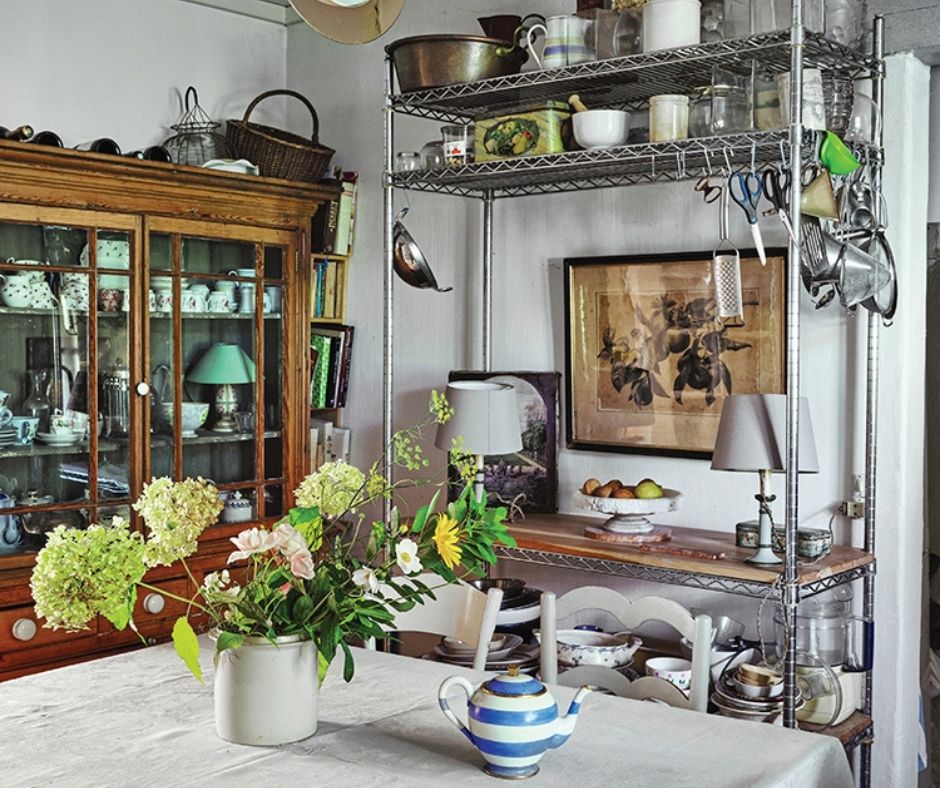
Isabelle is an actress and model. For her, the change was a little more complicated. She had to attend rehearsals, network, and have access to cultural events for her work, but she adapted quickly. “I’ve always spent time in the country. I grew up in Yvelines, to the west of Paris, on a farm at the edge of a forest. New York and Paris were parenthetical interludes for me.” Moving to the country was also a question of family priorities. “I didn’t see myself with two children in Paris, it’s as simple as that. When you live in the city, you’re only experiencing a tiny aspect of life. Here, you have the sense that life is richer. You’re close to the earth and in touch with things.” After viewing a few different houses in the Île-de-France region, they eventually settled in a small town near Courances.
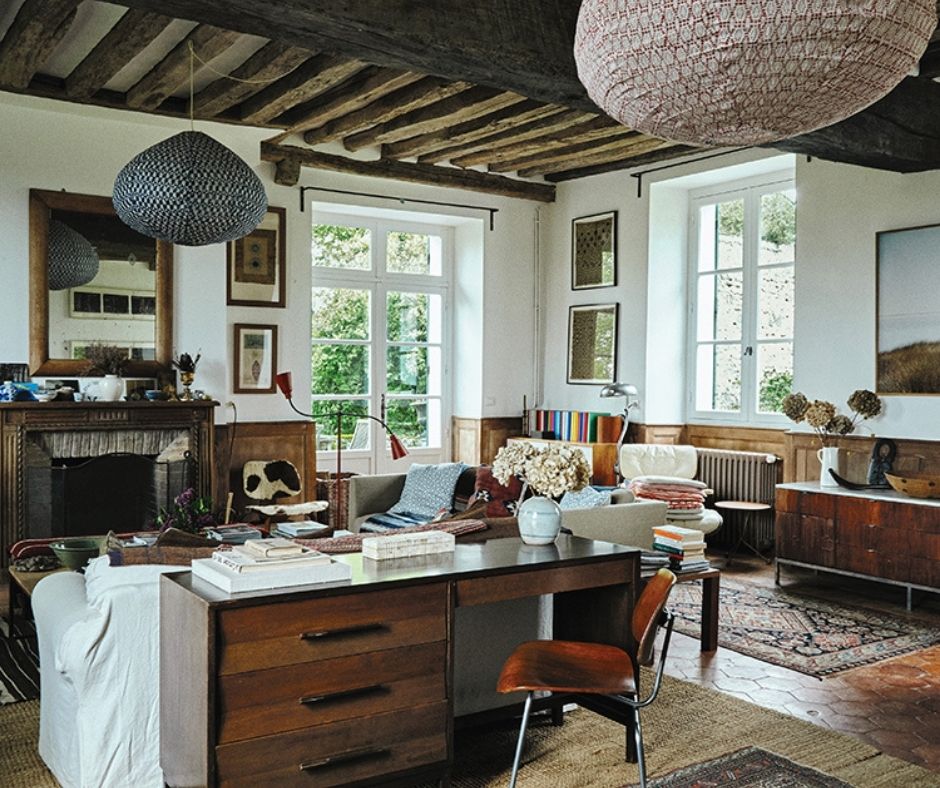
When it comes to style, this inspirational couple is an example to us all. Their house blends handsome contemporary and traditional looks flawlessly. There’s a distinctively British charm that’s offset by an eclectic mélange gleaned from the four corners of the globe. “It’s an accumulation gathered over the years from all parts. We did a lot of bargain-hunting in New York and in Norfolk, as well as in Belgium and in Africa,” says Patrick, who admits that their tastes have evolved since they left the city. “We had a penthouse in New York whose decor was pure American modernism: very spare, in grey, white, beige, and black. There was a lot of marble and a Knoll coffee table. Here, I find that I prefer Persian rugs, kilim carpets, and colour.”

Isabelle and Patrick’s older daughter has left the nest and lives abroad. Their younger daughter is soon to graduate. Admittedly, the house will be big for just the two of them, but they say they could never return to the city. “There are drawbacks, but what matters is being close to nature and experiencing it every day,” says Patrick. “In New York, I remember, we sometimes couldn’t tell whether it was winter, fall, or summer. Nature is part of life, and human beings aren’t supposed to be cut off from it. When you reconnect, you realise how nourishing, stimulating, and fascinating the natural world is.”
From Coming Home to Nature: The French Art of Countryfication by Estelle Marandon, Gesa Hansen and Charlotte Huguet, Flammarion, 2022.
PHOTOGRAPHYBY NATHALIE MOHADJER AND STEPHANIE FUSSENICH.
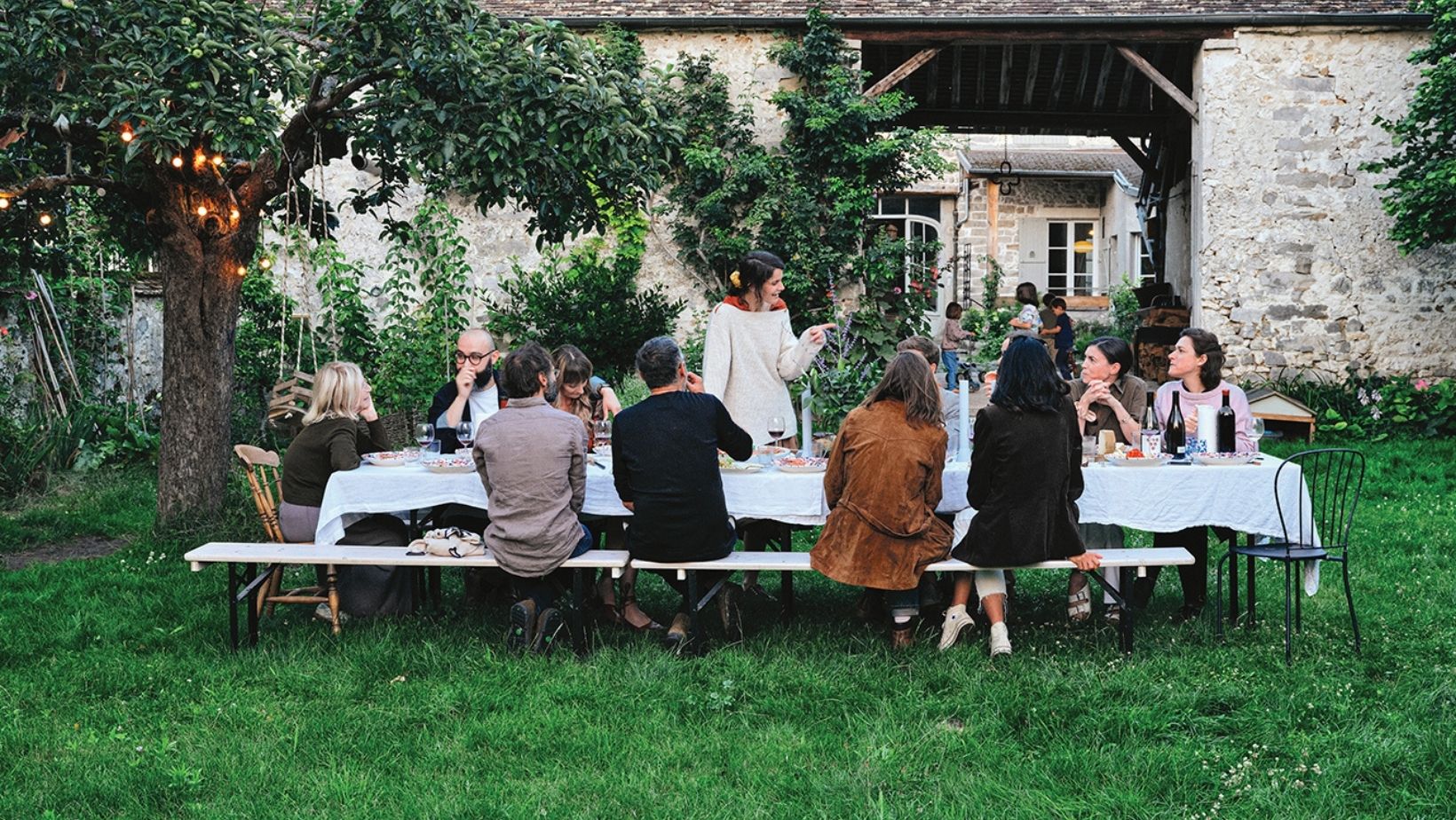
COUNTRY STYLE The ambience of a country house and its proximity to nature often leads to a shift in decorative tastes. There’s an obvious affinity for wood and other natural materials that carry the patina of time, but also a desire to adopt a different approach to consumption. Buying new things seems incongruous in this slower-paced lifestyle; for Isabelle and Patrick every weekend became a hunting expedition in antique fairs and upscale flea markets. LIKE-MINDED FRIENDS Loneliness is often the greatest fear when leaving for the country – worrying that friends won’t visit, surrounded by elderly retirees – yet moving to the country and having a big garden offers opportunities to revisit ties of friendship. Invest in neighbourly relationships and you’ll be well repaid. In the country, snobbery often yields to hospitality. So, the table gets bigger, the meals longer and post-prandial forest walks aid digestion.
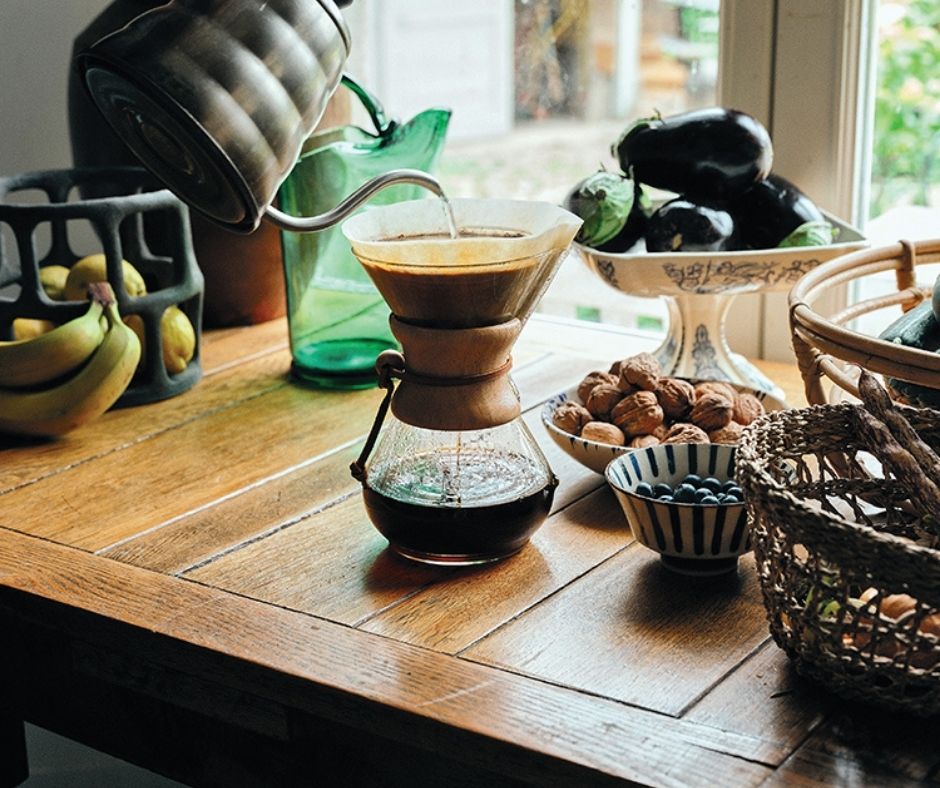
BASKET CASES Your dream has become a reality and you’ve swapped a cramped apartment for a spacious country house. What will remain of your former interior design preferences? Beware of buying new furniture in haste. All those contemporary, minimalist uncluttered interiors that captivated you previously seem wrong. Much more useful for storage and decorative accents are baskets. There’s no limit on baskets: they’re all allowed – wicker, willow, woven or coloured, in every size. TAKING TIME Living in the countryside allows residents to do things the oldfashioned way, like brewing delicious pour-over coffee.

PLANT A KITCHEN GARDEN Aubergine gratin using garden classics – aubergine, tomatoes and basil – tastes even better when they are grown in your own garden. THE RIGHT CLOTHES In the city, people often dress to be seen. In the country, the main goal is as protection from the elements. Your sartorial choices are likely to take a more original turn, freed from the diktats of fashion you no longer worry about the latest trends. But country living need not turn you into a hayseed – quite the reverse. You’ll be less influenced by the opinions of others and be able to wear what you want rather than fearing the judgement of others – clothes that feel right for you. That’s surely the beginning of a fresh relationship with fashion. RELAXED DECORATION Living in the country means you no longer have to play a game of Tetris to keep things in order. There’s plenty of space, so start a collection and accumulate knickknacks and accessories. The kitchen should become an exhibition space – the kitchen shelf is your new library. Arrange books with a touch of artful disorder; these literary Towers of Babel will lend a certain bohemian charm to any room. In brief, display what you have. This rule applies to everything. SIGNS YOU’VE ACCLIMATISED You own at least four types of rain boot including a slip-on Hunter Chelsea. You wear a straw hat as wide as a parasol for sunbathing in the garden. You set out every day with a basket in your hand. When you want to dress up you put on a long coat such as a Barbour Stockman or a trench coat – the only piece from your former urban wardrobe that survived the transition. You’ve developed a passion for khaki green and no longer wear heels.
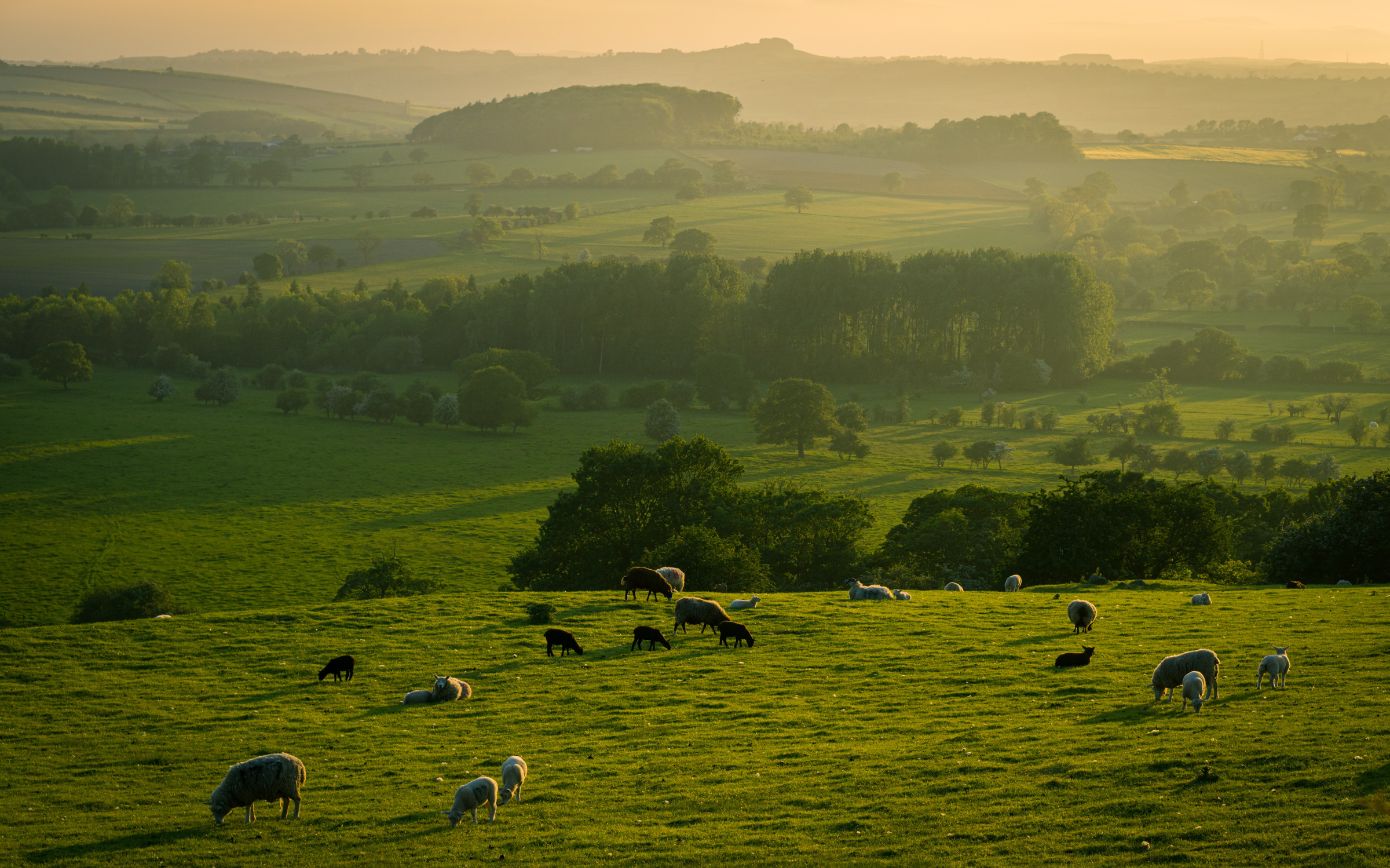
Image via Unsplash
BE INSPIRED
TRAVEL: Book country house D’Une Île, in the heart of Le Perche, 150km from Paris, and discover the French art de vivre in the country; www.duneile.com. READ: A Country Year by Sue Hubbell. The late American author and beekeeper examined the natural world for insights into relationships, self-reliance and, as she put it, “where we older women fit into the social scheme of things once nest-building has lost its charm.” Walden, or Life in the Woods by Henry David Thoreau. In 1845, American author Thoreau left town to live alone in a cabin. For two years, he maintained a self-sufficient life. Classic reading on the relationship between human beings and nature. Wilding: The Return of Nature to a British Farm by Isabelle Tree. Tree’s book spreads a message of hope, describing the remarkable rehabilitation of a farm in Sussex and its positive effects on diversity. Another Way of Living by Jacques Massacrier. A guidebook on how to live self-sufficiently in the country, published in 1973, remains pertinent and inspiring. The Hidden Life of Trees, Peter Wohlleben. According to forester Wohlleben, trees are social beings capable of communicating, learning, remembering, and acting as caregivers for their ailing neighbours.
She is the queen of no makeup makeup and even manages to make a smokey eye look subtle. When everyone else was going for heavy contour and laminated eyebrows, she continued to promote enhancing your natural features with simple tricks and smart product placement. If you have seen any of her videos, you will notice how little product she actually uses. Even Victoria Beckham commented how surprised she was when she went to remove her makeup after a shoot with Lisa on how little product was applied.



